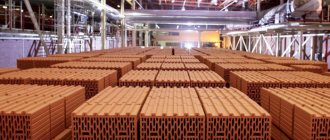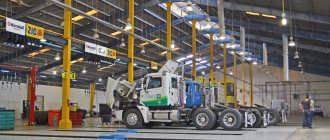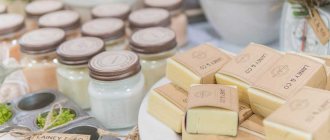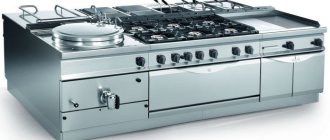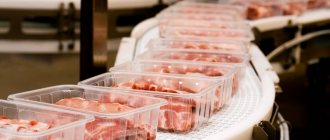Project Summary
Initially, dry cement-sand mixtures were used exclusively for plastering and bricklaying. They were simple in composition and therefore were not particularly flexible, which significantly limited the scope of their use in construction. Technologies gradually improved, which made it possible to significantly improve the quality of building materials through the use of more and more new components in its composition. Modern types of dry construction mixtures are varied in purpose; they include various mineral additives, fillers, and binders, which give the material excellent technological properties.
Types of dry mixtures and their use
Dry building mixtures are powdered materials made in a factory from binders and fillers. They are easy to use: just dilute them with water. This material greatly simplifies construction and repair work. The market offers mixtures of different compositions (that is, with different characteristics) and even different colors. This has a positive effect on customer interest in the product.
There are several criteria for classifying building mixtures. Let's look at the most popular:
- By main purpose: structural (for the construction of permanent buildings) and special (heat-resistant, decorative).
- By density: heavy (over 2 thousand kg/m3) and light (less than 2 thousand kg/m3).
- By binder: cement, slag, gypsum, lime, polymer, liquid glass.
- By structure: with large and medium pores, cellular, non-porous.
- According to the filler used: dense, porous, special.
All dry mixtures, regardless of type, have a number of positive characteristics:
- high hardening speed with the ability to reduce it;
- frost resistance;
- moisture resistance;
- high compressive or fracture strength;
- economical consumption;
- variety of colors and shades.
The main area of application of dry mixtures is construction and repair work. Solutions are used both for interior decoration and for finishing building facades. They are used for priming, puttying, finishing, fixing decorative elements, leveling surfaces, filling cracks, sound insulation and waterproofing work, fixing artificial and natural stone, tiles, repairing reinforced concrete and masonry.
Options for classifying dry building mixtures according to popular criteria
Project implementation schedule
| Stage / Month, decade | 1 | 2 | ||||
| 1 Dec | 2 Dec | 3 Dec | 1 Dec | 2 Dec | 3 Dec | |
| Registration of a company, opening a current account | + | + | + | |||
| Signing a lease agreement | + | + | ||||
| Purchase of technological and auxiliary equipment | + | + | + | |||
| Room renovation | + | + | + | |||
| Registration of permits and approvals | + | |||||
| Installation, adjustment and testing of a production line for the production of dry building mixtures | + | + | + | + | ||
| Preparation of documents for the range of products | + | + | ||||
| Selection of specialists | + | + | ||||
| Concluding agreements with consumers of products and suppliers of raw materials | + | + | + | + | ||
| Starting a business | + | |||||
The project is financed from the founder’s own funds. When implementing it, the simplified taxation system (STS) is used.
Main taxes paid:
| Tax | Applicable tax base | Periodicity | Bet amount |
| By the amount of profit | Amount of profit received | Mts | 20% |
| VAT | Amount of accrued VAT | Mts | 18% |
| For property | The amount of the cost of the acquired property | According to schedule | 2,2% |
| Income | Payroll | Mts | 13% |
| Social payments | Payroll | Mts | 34% |
The tax calculation period is a calendar month.
Business relevance
The increase in the pace of construction work and the use of modern technologies to support it determines the demand for dry mixtures, since the preparation of the compositions takes minimal time, and their characteristics correspond to the required parameters.
These factors determine the demand for the product, which has become the reason for the prospects and profitability of the business for its production. The use of dry mixtures in construction greatly simplifies the task of builders. They get the opportunity to work with working solutions whose characteristics are ideal for a particular type of activity. And for their production you do not need to create special conditions. Simply place the mixture in a container, add water and mix thoroughly until smooth. All components are taken in accordance with a certain proportionality.
Production scheme
Ready-made solutions cannot be stored for a long time; moreover, large containers and an appropriate area are required for their placement. Compositions from dry mixtures are prepared in quantities necessary to ensure a specific job. They cannot be stored as they must be completely used. Placing powders does not require much space. Their storage is limited only by the period of use of the product. The only condition for preserving the original properties of the mixture and preventing clumping is to ensure dryness in the premises.
Market analysis
The situation on the domestic market of dry construction mixtures is assessed as stable. The growth rate is about 15% per year, and there is prospect of its increase. This is due, first of all, to the fact that more construction companies are moving to the use of modern technologies based on the latest materials. Although SCCs have been known for several years, their quality and properties in comparison with materials from the beginning of the century are practically incomparable. In Russia, masonry mortars, various adhesives and leveling compounds, putties, heat- and waterproofing composites, sanitary and repair mixtures are actively used in construction. What all these materials have in common is that they are made on the basis of binder components with a variety of modifying additives and reinforcing fillers.
Russian manufacturers have overcome the main drawback of mixtures, which distinguished the material from imported ones - manufacturing them in a “wet” form. This significantly limited the shelf life of the solutions and did not allow builders to correctly observe the proportions when mixing.
Now the bulk of domestic products are manufactured using the technologies of industry pioneers and leading global manufacturers - companies from Germany, Poland, and Finland. The development of these technologies led to the rapid growth of the domestic market, as well as the emergence of many entrepreneurs who saw in this production an opportunity to make a solid profit and ensure high profitability for their enterprise.
In Russia, the volume of consumption of dry construction mixtures per person is 2-3 kg per year. This is tens of times less than in Germany or France, where these figures exceed 25-30 kg. Our main consumers of these products are repair and construction organizations (approximately 75%), individuals are not yet ready for mass consumption of mixtures for their needs.
Among the types of SSS, the most popular are putties, which account for 60% of the consumption segment, followed by universal mixtures and plaster. The demand for self-leveling floors is gradually increasing.
The structure of the domestic CVS market is such that in almost all large populated areas there are dealers of domestic and foreign manufacturers of mixtures, and if we are talking about Russian companies, then they mainly sell their products in the region where they themselves are located.
According to experts, the domestic market in the near future will develop under the sign of the opening of an increasing number of regional production facilities, which will certainly significantly increase competition and create the need to find the most efficient forms of production and sales of products. The costs of their creation will increase, first of all, due to increased costs for logistics and marketing support for the business. You shouldn’t expect players with new product designs to appear on the market in the near future.
Assessing the prospects for business activity
Experts are confident that the market for dry construction families can develop. In addition, the growth of the segment should only increase in the future, as people's needs are constantly increasing. Currently, dry building mixtures are actively used in various areas of construction and finishing, so success is almost always guaranteed.
The prospects of an entrepreneurial idea can be explained by the fact that the products are in demand. The sales market turns out to be huge.
Taking into account the nuances of technology and construction products, one can understand that the same equipment is designed to produce various types of finished products. The most important thing is to conduct marketing research before opening a business and understand what will be in demand among people, because even the region of your activity has an impact.
You can limit yourself to a minimum starting capital, but still offer a variety of products to your target audience.
Among the advantages of organizing a business activity, it should be noted that it is easy to organize the production of dry construction mixtures. In this regard, if there is an opportunity to organize a business at home, you will open up truly worthy prospects for yourself.
Does the direction under consideration have any disadvantages? You should prepare for a high level of competition and a noticeable influence of seasonality. Despite the presence of these difficulties, problems can be successfully overcome if you produce high-quality goods and establish wholesale distribution of products.
Description of the object
The technology for the production of dry building mixtures at a mini-enterprise consists of several stages:
- Selection of raw material suppliers.
- Preparation of components.
- Delivery of raw materials.
- Handling and sifting of materials for the production of SSS.
- Placing components in special supply bins.
- Dosing and mixing of materials.
- Packaging of finished products.
- Warehousing.
The technological process is organized on special equipment - a production line, which includes a set of standard units and mechanisms. For their placement and installation, you will need a room with an area of at least 150-180 square meters. m. To store finished products you will also need a warehouse with an area of 80-100 sq. m. m. The production premises are equipped with exhaust ventilation and a heating system that ensures that the temperature is maintained at least 18-20 degrees C.
How much profit can you make?
How profitable is the production of dry mixes? This material is usually sold in packaged bags ranging from 1 to 20 kilograms. The standard price is from 100 rubles per kilogram. The more complex the composition and the “better quality” the characteristics, the higher the cost. For example, a good frost-resistant mixture with increased strength cannot be purchased for less than 400 rubles per 1 kilogram. At the same time, the trade margin on goods rarely falls below 30%.
A low-capacity enterprise produces 5 tons of mixture per hour, that is, 40 tons per shift. Revenue after the sale of this material will vary from 1 to 1.5 million (depending on the composition of the mixtures produced and the prices set by the manufacturer). In this case, at least 300 thousand will be profit. Working in 2-3 shifts, the company is able to reach an income level of 3-4 million rubles daily. Such amounts will be realistic only if there are stable sales channels.
Enterprise equipment
Production equipment for the production of dry mixtures is purchased as a set that makes up the production line. Line composition:
- Vibrating sieve.
- Mixer.
- Automatic auger.
- Packing bin.
- Drying sand.
The total cost of the production line is approximately 1.6 million rubles. Once the enterprise reaches break-even operating mode, a higher productivity production line (9-10 t/h) is installed, the cost of which is about 3 million rubles.
In addition, for production purposes you must purchase:
- Weighing equipment.
- Watch.
- Specialized tools and equipment.
- Pallets for storing finished products.
All equipment of the enterprise must comply with safety requirements and ensure the manufacture of products according to established quality standards.
Production technology
At first glance, making a dry construction mixture is a fairly simple process - pour, mix and package different ingredients, but most mixtures are made according to certain recipes, which may vary depending on the equipment and the type of original product.
But, there are some general points that do not change in the production of different types of products. For example, the basis of any standard mixture is sand and cement. The addition of surfactants to these components makes them suitable for flooring or tiling.
Stages
The technological chain for the production of dry mixtures consists of a number of stages:
- At the preparatory stage, fillers are sifted and crushed, which must meet the standards. The mixtures should not contain unnecessary impurities, as they can reduce the quality of the product.
- Some ingredients, such as plaster, clay or sand, require washing or additional moisture, which occurs in the next step.
- Next, the materials are placed in supply bins, where the starting materials are mixed and dosed.
- The final stage of production is packaging and storage of finished products.
Ready-made building mixtures should be stored in a special warehouse with strict adherence to humidity levels.
Equipment
Finding equipment for the production of building mixtures will not be difficult, since at the stage of business formation it is enough to purchase a minimum production kit. It includes:
- Packing bin.
- Screw.
- Mixer.
- Dispenser.
- Lift.
- Drying for sand.
- Vibrating sieve.
It is much easier to purchase a ready-made business, but to do this you need to carefully study the market and business offers.
The purchase of equipment with a productivity of 5 thousand tons per hour can cost approximately 1.5 million rubles.
Purchase of raw materials
To ensure smooth operation of the enterprise, tenders for the purchase of raw materials are held at the initial stage of project implementation. The company needs to purchase:
| Type of raw material | Price (in rubles per t/kg) |
| Portland cement white | 240 (50 kg) |
| Portland cement gray | 210 (50 kg) |
| Calcium carbonate | 160 (1 kg) |
| Quartz sand | 3,000 – 4,000 (depending on faction) |
| Hydrated lime | 9,000 – 9,500 (1 t) |
| Modifying additives | 10-170 (1 kg) |
These materials will be used to produce the following products:
- Adhesive compositions (facade, tile, wallpaper).
- Gypsum plaster.
- Mounting mixtures.
- Putties (facade, gypsum, cement, finishing).
Raw materials
The business plan necessarily includes the costs of purchasing raw materials and paying staff. The most expensive raw materials will be modifying additives. In addition to them, you need to purchase hydrated lime, calcium carbonate, quartz sand, gray and white Portland cement. The cost plan for raw materials should be calculated based on the cost of 10-170 rubles. per kilogram of each component.
Few raw materials are produced in our country. If we are talking about expensive additives, they are not produced at all. The material will have to be purchased abroad, where the production of such raw materials has been going on for decades. But in any case, the technologist must check each batch for the required properties. In addition, it is advisable to require a certificate of conformity from the supplier for each component. You will need them to obtain the appropriate certificate for the final product.
Marketing and advertising
The marketing policy of the enterprise is aimed at forming among consumers the opinion that the products produced have excellent performance characteristics, are priced lower than their main competitors, and that the company is ready to consider any options for long-term cooperation with the provision of significant price preferences.
To this end, the following promotional activities are planned:
- Preparation and publication of messages about the enterprise in local media.
- Development of a targeted advertising scheme by sending letters to specialized construction stores and companies.
- Development of the company’s own website with the ability to order products online.
- Activating consumer demand by developing attractive commercial offers and holding promotions.
The main marketing resource of the enterprise is the high quality of its products, which can be purchased profitably directly from the manufacturer.
Financial plan
The calculation of costs and income of a mini-workshop for the production of dry building mixtures was made on the basis of average prices for products at the beginning of 2020 and the availability of a production line with a capacity of 12 tons of products per work shift (8 hours).
| Expense item | Amount (in rubles) for the billing period (month) |
| Payment of rent for production and warehouse premises | 18 000 |
| Purchase of technological equipment | 3 000 000 |
| Fare | 200 000 |
| Costs for purchasing raw materials | 200 000 |
| Salary fund | 200 000 |
| Total | 36 18 000 |
Based on average prices for raw materials and the production capacity of the enterprise of 480 bags per shift, the cost of 1 bag of glue (25 kg) will be 60 rubles. Thus, the replacement cost of production will be equal to 26 thousand rubles (22 thousand - raw materials, plus 4 thousand - production costs). Under such conditions, the enterprise will receive a profit of more than 72 thousand rubles per shift (more than 2 million rubles per month).
Select the appropriate option
| Standard | Advanced with financial calculations with Excel financial model | Expanded with adjustments |
| Standard business plan | Extended business plan for dry mixes with a complete business analysis and financial plan for 5 years | Extended business plan for dry mixes with a complete business analysis and financial plan for 5 years |
| Detailed financial model of dry mixes | Detailed financial model of dry mixes | |
|
| |
| Adjustment of the business plan to your numbers by our analysts within 5 working days | ||
| Business plan volume: 30 pages. | Business plan volume: 80 pages. | Business plan volume: 80 pages. |
| 10,000 rub. | 20,000 rub. | 39,000 rub. |
| RUB 1,390 | RUB 2,950 | RUB 24,990 |
| Buy | Buy | Buy |
This kit is ideal for those who need a business plan to obtain a loan or attract investment.
Description
The extended business plan includes a financial model of dry mixes in Excel format.
The business plan was developed taking into account the practice of evaluating projects in Russian banks, as well as taking into account the requirements of investors and funds for supporting entrepreneurship in the Russian Federation. It will allow you to justify management decisions on investing in the creation and development of dry mixtures, predict its financial results and assess risks.
A full description of the business plan can be downloaded from the link:
Description of the business plan for dry mixtures.pdf
Contents
To familiarize yourself with the contents, download the file:
Description of the business plan for dry mixtures.pdf
Tables and graphs
To view the list of tables, graphs and charts, look at the file:
Description of the business plan for dry mixes.pdf
Payment and delivery
You can pay in the following ways:
- Bank cards (Russia)
- Electronic money
- Terminals and communication salons
- Money transfers
- Bank cards (International)
Sending a business plan and financial model:
Sending is carried out within 24 hours after payment to your email address.
Business organization
Dry mixtures are very actively used in construction and repair work. They are good because they are easy to use, do not require much space for storage, and there is no need to mix the components yourself. In order to successfully start in this line of business, be sure to prepare a good business plan for dry mixes.
Stages of business organization:
- Marketing analysis of the environment.
- Development of an action strategy.
- Selecting a site for building a plant.
- Carrying out construction and installation work.
- Purchase of equipment.
- Hiring.
- Selecting suppliers of raw materials and reaching agreements on cooperation.
- Development of a concept for attracting customers.
- Start.
When organizing an enterprise, keep in mind that competition in the market is quite high, so it makes sense to launch production, focusing on the domestic market of the region, then your competitive advantage will be the low amount of transport and overhead costs, and, as a result, a reduction in the price of finished products.
Market analysis and description of the dry mix project
Even despite the crisis in the economy, which also affected the construction market, production volumes of dry mixes are growing, although in recent years it has not been as active as before. The leader in the production and consumption of dry mixtures is the Central Federal District, especially Moscow and the Moscow region. At the same time, there is also interest in this type of materials in other regions.
Produced goods/services
Gypsum, polymer and cement dry mixtures.
Potential clients
Construction companies, large and small specialized retail chains and stores, etc.
Calculations for opening a plant for the production of dry construction mixtures are presented below in a sample business plan.
Financial part of the business plan for dry mixes
Investments:
| Attachments | Deadlines | Amount, thousand rubles |
| Registration of an organization, paperwork | 2 | xxx |
| Design work | 2 | xxx |
| Plant construction | 8 | xxx |
| Providing communications (electricity, water supply, etc.) | 3 | xxx |
| Finishing activities | 2 | xxx |
| Purchase of equipment and other supplies | 1 | xxx |
| Obtaining the necessary permits | 2 | xxx |
| Purchase of raw materials (for the first time) | 1 | xxx |
| Organization of an advertising campaign | 2 | xxx |
| Other costs | — | xxx |
| Total | xxx |
An example of a business plan for an enterprise for dry construction mixtures suggests that investments in the business will amount to about 30 million. rubles
Income:
| Source of income | Approximate price, for 1 bag | Sales volume, per year (average), bags | Amount of revenue, thousand rubles in year |
| Blends: cement | xxx | xxx | xxx |
| plaster | xxx | xxx | xxx |
| polymer | xxx | xxx | xxx |
| Others | xxx | ||
| Total | xxx |
Annual revenue will be about 30 - 40 million rubles.
Expenses:
| Expenses | Amount per year, thousand rubles |
| Communal expenses | xxx |
| Costs of purchasing raw materials and their delivery | xxx |
| Remuneration of personnel, social services. contributions | xxx |
| Advertising costs | xxx |
| Loan servicing (interest) | xxx |
| Taxes | xxx |
| Others | xxx |
| Total | xxx |
Annual expenses average 22 - 28 million rubles.
Profit, payback and profitability of the business:
| Index | Meaning |
| Profit, thousand rubles | 10020 |
| Profitability | 28% |
| Payback period | 3 years |
The payback period is about 3 years, and the profitability is 28%.
Conclusions:
The production of dry mixtures is a highly profitable activity that is also widely in demand among consumers. Choosing the right territory for locating an enterprise, finding stable suppliers and buyers, building competent logistics, ensuring uninterrupted production - a high-quality business plan will help you cope with these and many other issues.
Risk assessment
This business plan characterizes the enterprise for the production of dry construction mixtures as meeting the requirements for environmental protection, safety precautions and industrial production standards. According to the developers, the main risk groups for it are:
- Risks associated with contractual terms of suppliers of raw materials and technological equipment.
- Technological risks caused by the purchase of low-quality equipment.
- Market risks associated with increased competition between similar enterprises in the region.
- Risks when selling products associated with a lack of production capacity with a steady increase in demand.
Eventually
Considering that dry building mixtures have significant advantages over other similar materials, the demand for them will constantly increase. Consequently, an enterprise for their production will have high profitability (for this business plan - at least 23%) and great prospects for further development.
The production of dry mixtures is not associated with seasonal fluctuations in demand, so the company will make a profit throughout the year.
Investments in this business at the initial stage are insignificant; the founder’s own funds can be used for this, which eliminates the need to search for investors and attract commercial loans.
Thus, the creation of an enterprise for the production of these building materials is a highly profitable business that allows you to quickly recoup all costs and move into sustainable development mode.
Recruitment for the plant
Among the staffing units of a large modern production of dry mixtures there is practically no place for unskilled labor. The progress of work is controlled by the operator, directing the material to the units, regulating the heating temperature of the chambers and furnaces, and the number of revolutions of the millstones through commands sent through the computer. The main qualities of operators are observation, focus on the process, and speed in decision making.
The main person who determines the required temperature for processing materials, the time of the preparatory stage, the number of necessary actions and their order is the technologist. All his decisions must be justified and logical. The rationale for his actions is provided by studies of source materials in the chemical laboratory of the enterprise. Laboratory assistants determine the technical characteristics of raw materials and finished products.
Accounting for materials arriving at warehouses and shipment of ready-to-use mixtures is also carried out using computer technology. Installation of a computer production network using the 1C-Enterprise and 1C-Accounting programs simplifies reporting on the movement of funds and materials as much as possible. Storekeepers and sales department employees must have PC skills, which gives an advantage in preparing quarterly and annual reports to the accounting service and the enterprise economist.
